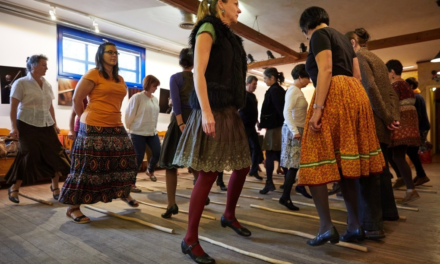Miklós Radnóti died 80 years ago.
Eighty years ago, on November 9, 1944, the poet and translator Miklós Radnóti, one of the defining figures of 20th-century Hungarian poetry, died.
He was born in Budapest on May 5, 1909 as Miklós Glatter. His birth cost the lives of his mother and twin brother, and this heavy legacy also influenced his later poetry. He became a complete orphan at the age of eleven, and from then on he was raised by his maternal uncle, Dezső Grosz, who intended him to pursue a commercial career. He studied at the textile industry vocational school in Reichenberg (Liberec) in the Czech Republic, then worked at his uncle's company between 1928 and 1930. However, he was much more attracted to literature, and he wrote poetry from his teenage years.
Initially published under his own name, his poem was first published in 1927 under the name Miklós Radnóti-Glatter. In 1929 and 1930, he participated in the editing of the Kortárs magazine, and as Miklós Radnóti, he first wrote a review of József Berda's volume Öröm. His first book of poems, Pogány hántő, was published in 1930.
In 1930, he enrolled in the Hungarian-French department of the University of Szeged, where he became one of the favorite students of the Catholic scholar-poet Sándor Sík. He got involved in the activities of the Youth Art College in Szeged, went on village research trips, took part in the cultural life of the workers' home, and came into contact with the illegal communist party.
His 1931 volume entitled "Songs of the New Shepherds" was confiscated and accused of incitement and defamation of religion. Radnóti wrote his doctoral dissertation on the artistic development of Margit Kaffka (1934), supervised by Sándor Sík. In 1934, he was awarded a doctorate in Hungarian literature, but in order to complete his university studies, he still had to submit his thesis in French and pass a teacher's examination. In 1934, he married Fanni Gyarmati, who was the inspiration for the tender-toned pieces of conjugal lyric, which are rare in Hungarian poetry.
He could not teach because of his origin
He obtained his teaching certificate in 1935, but due to his Jewish origin, he did not get a teaching position, he lived on private lessons and modest fees. In 1937, he received a Baumgarten prize, and with the improvement of his financial situation, he visited Paris several times in the mid-1930s. Several volumes were published one after the other, in 1936 Járkálj cke, hálarraítelt!, which was considered the turning point of his career, followed by Meredek út, az Krek hava, a prose summary of his childhood.
In the meantime, he also worked on literary translations, together with István Vas, he published selected poems by Apollinaire, and then translated La Fontaine's tales. The volume of his Selected Poems was published in 1940, but from then on his life was lived in constant terror. The Tajtékos ég volume was compiled by Radnóti himself, but it was published only after his death, in 1946, supplemented by his last poems.
Due to his origin, the poet was called up for labor service several times, he served in Szamosveresmart, Margitta, Királyhág, Élesd, while he could spend more or less time at home. In May 1944, he was sent to a camp near Bor in Serbia, from where he was sent on his last journey in September 1944.
Together with his companions, he was driven on foot towards the west,
the poet, who was no longer able to walk, was shot dead by squad boys on November 9 in Abda near Győr. His notebook containing his last poems, the Bori notebook, was found in his coat pocket during the exhumation.
A literary and anti-racist award was also named after the poet
Radnóti was buried in Budapest in August 1946, in the Kerepesi úti cemetery. In 2009, his statue, the work of sculptor Imre Varga, was inaugurated in front of the theater bearing his name in Pest. A literary award and an anti-racist award were also named after him. His wife, Fanni Gyarmati, died in February 2014, his diary written from 1935 to 1946 was published in December 2014.
In 2016, the volume You Are a Sharp Light in the Shadows - Photographs of the Radnóti Couple was published, in the same year Tamás Bíró-Balogh edited the poet's dedications under the title Könyvvel uzének néged, and in 2017 I am a Hungarian poet separately - Miklós Radnóti's correspondence I. published a collection entitled Edited by Győző Ferencz, Radnóti's Diary was published again in 2018, a book with more detailed notes than the 1989 and 2003 editions, which the poet wrote between 1934 and 1943.
Radnóti's early poetry is characterized by the free verse form and the rebellious expressionist tone, but his works born in an increasingly threatening existence show a mature, classical form. Among his prose writings, his studies about his contemporaries stand out, as well as the Diary, which is also a valuable document on creative psychology.
He revived traditional genres
As Géza Hegedűs pointed out: for him, "the discipline of form is an aesthetic and artistic response to a chaotic world that lacks humanity". He revived traditional genres: the epistle (Letter to his wife), the hymn (Hymn for peace), the ode (I don't know) and the eclogue.
His lyrical postcards are poignant accounts of the last months of Razglednica's life, of complete physical and mental vulnerability and misery.
Ma7.sk /News station
Featured image source: fidelio.hu













